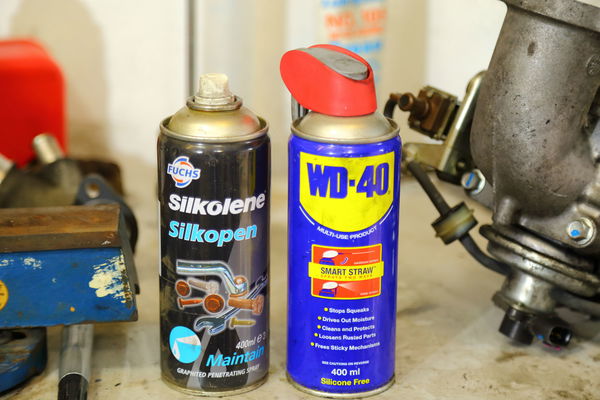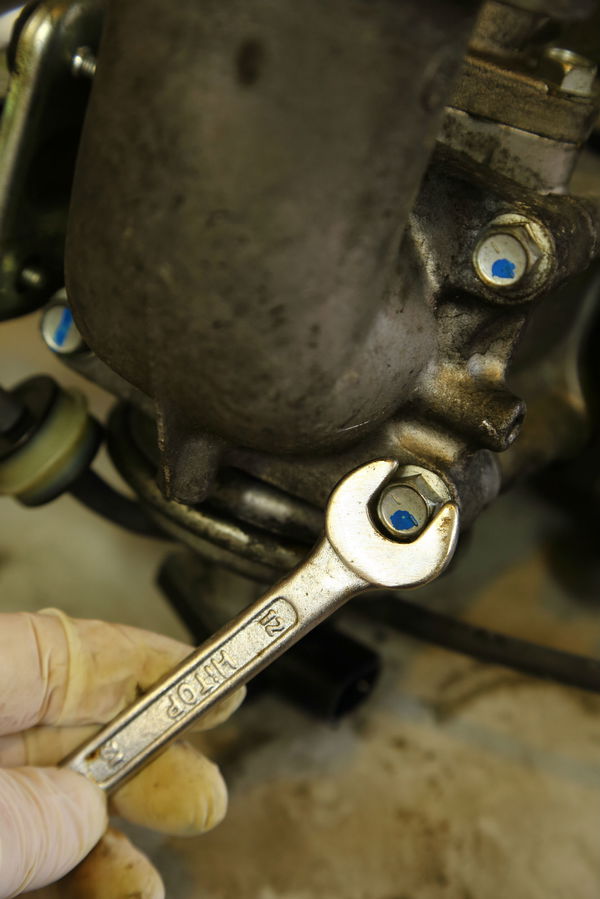How to... get seized fasteners off
Five essential tips

THERE are two main problems with bikes when it comes to fasteners. Everything is exposed to the elements – and, too often, cost-cutting means nuts, bolts and screws aren't up to the job. Firms saving a few quid here and there use cheaper, less corrosion-proof materials. Add in production lines not using enough grease or lube when assembling parts, and you end up with seized fasteners. Then, when you try to loosen them, the heads chew up, and you're snookered.
So - here's five top tips on loosening the tight 'uns.

1. Basics first
Trouble often starts when you don’t use the proper tools. Poor-fitting screwdrivers, spanners and Allen keys round off the fastener heads, and if the threads are a bit stuck to start, you'll be in all sorts of bother.
So, make sure you're using the right tool – especially with cross-headed screws. Japanese bikes use JIS – Japanese Industrial Standard – heads, which are subtly different from normal cross-head screws. You'll generally get away with a Phillips driver, but consider investing in some JIS bits or screwdrivers. Never use Pozi-drive bits or drivers – these are for DIY around the house only – wood screws and putting up shelves.
For Allen bits, Torx heads and hex nuts, make sure you have really good quality tooling. If cash is tight, just buy single bits in the most common sizes as you go along – 10, 12, 14, 17, 19mm sockets, plus 4, 5, 6, 8mm Allen bits. A tool kit with basic bits in all sizes, plus high-quality tools in the main sizes is A Good Thing.
AS soon as you feel the fastener is a bit tight, stop turning and have a look. Is there corrosion? Distortion? Is the head worn already? Technique is important – make sure you're applying force squarely, pushing into the fastener head if using a cross-headed screwdriver, and seating an Allen bit fully into the bolt head.
First thing is some lube: a proper penetrating oil like Plus-Gas or similar works best. WD40 or similar is okay in a bind but isn’t designed as a full-bore penetrating fluid. The best stuff uses special thin hydrocarbons and additives which can trickle into the smallest of cracks. Soak the fastener's threaded area with the lube, give it a moment or two to penetrate, then try again.
STILL nothing? Then we need to up our game. Remember that we still want to preserve the fastener shape: rounding off the hex or gouging out the Allen head won’t help us. Try a different bit to get a firmer grip, and if using a socket set, maybe get out a longer bar for more leverage.
The next trick is heat and/or cold. Different materials expand and contract at different rates, so if you can heat up a bolt, then cool it down again, that often breaks the corrosion bonds a little, enough to get some penetrating fluid in there. Get the seized area nice and hot with a blowtorch, then once it cools, get the Plusgas out again. A plumber's freeze spray can increase the temperature differential even more.
BY now, you've probably damaged the fastener head, and if you can't get the correct tool to lock onto it any more, tactics have to change. If there's space, hacksawing a slot across a rounded Allen head bolt can allow a plain screwdriver bit to help. A slightly larger Allen bit might hammer in and get enough purchase to turn – or a Torx bit in a similar size.
With rounded hex-head bolts or nuts, you may be able to get a set of Vice-Grips on there. Or a slightly smaller (cheap, expendable!) socket could hammer on tight – try those old imperial sizes that you never use anyway. Get a small punch or chisel, then carefully tap the nut off anti-clockwise with an engineer's hammer, just locating the punch head on the edge of the nut. Worst case with a rounded nut, drill a small hole in one face, and locate the punch in there. If that doesn't work, drill a line of holes up the nut, and use a chisel to break it in half – take care not to wreck the threads on the bolt too much though.
IF you’re still here, than chances are what used to be a bolt is now a mangled mass of metal. Some folk swear by welding a new hex-head nut onto a ruined fastener – the extreme heat helps loosen it, and the nice new hex gives lots of purchase for a big spanner or socket. Worth a go if you have welding facilities and space to work.
Drilling the old fastener out is a common last resort, but needs care. Use a centre punch to get started in the middle of the bolt, and start with a small drill then work up. It takes a lot of practice to get the drilling straight, and avoid wrecking whatever the fastener is screwed into – go slowly until you're sure of what you're doing.











